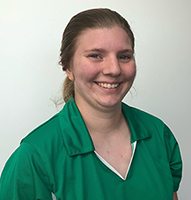May 21 - July 31

Validation of Mobile Mesonet Pressure Observations
Ivy MacDaniel
What is already known:
- Pressure ports are designed to measure pressure as accurately as possible.
- Station pressure measurements need to be converted to sea level pressure for research purpose.
- Elevations are important for converting station pressure measurements to sea level pressure.
- Previous studies had shown that there were inaccuracies in station pressure data.
What this study adds:
- Responses of different pressure ports to a vehicle in motion were more erroneous than anipacted.
- Accuracy and quality of GPS elevation data were not as ideal as they needed to be for converting to sea level pressure.
- Comparison of pressure data from a test run on hilly Highway 9 to those from a thunderstorm showed that both experienced changes in range of two to five millibars.
Abstract:
The aim of the project was to explain problems with the methods used to make station pressure measured by Mobile Mesonet useful and to evaluate the performance of the vehicle platform while the vehicle is in motion. Tests were performed at Five Miles Flat and Highway 9 to evaluate GPS elevation and pressure ports. All three pressure ports were tested in this study. Also, a sample data was collected by a thunderstorm passing over University of Oklahoma to compare the data from the storm to those produced during tests. Overall, both silver and white port had unusual and unexpected errors in data when the vehicle was in motion. Yet, there is no meaningful data on black port yet due to human error. In case of GPS sensor, errant and previously unreported behavior in altitude data warranted a further investigation in quality of GPS altitude data. Therefore, there is more testing on pressure ports and GPS sensor that is necessary to resolve the issues with the instruments in question.